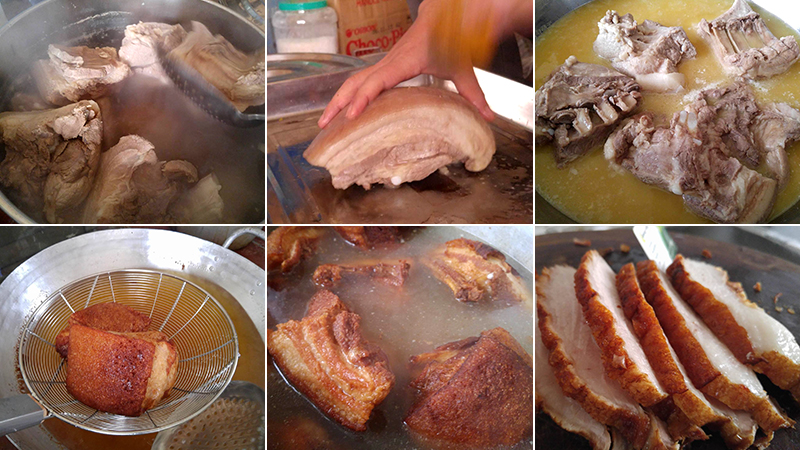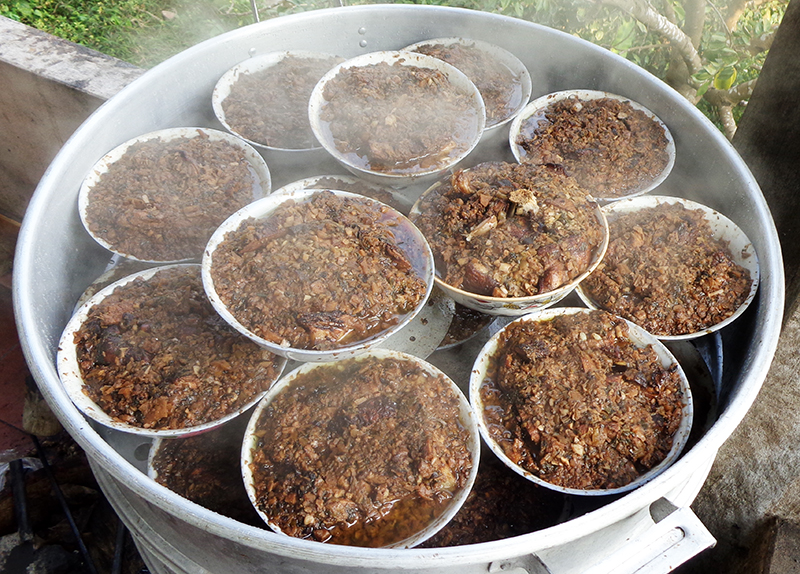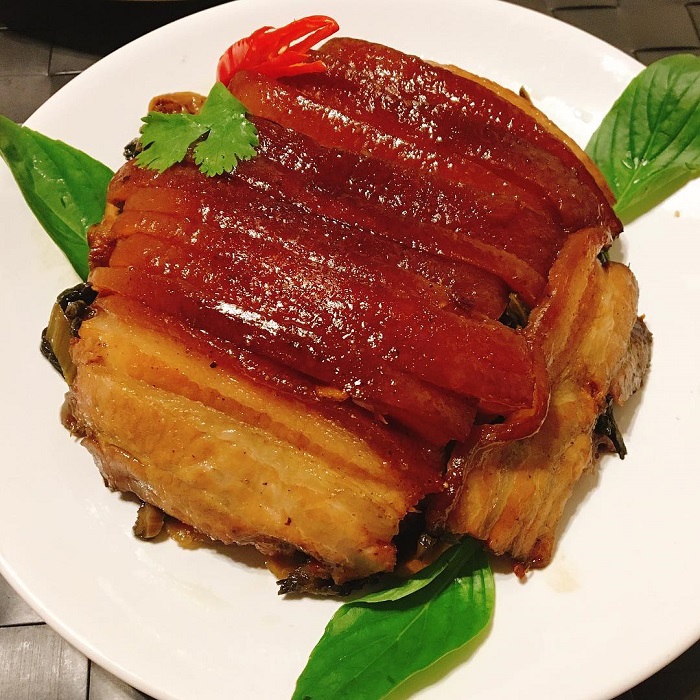Khâu Nhục
1. Overview
Khâu nhục is a traditional braised pork belly dish deeply rooted in the culinary heritage of the Tày and Nùng ethnic groups in Lạng Sơn Province, northern Vietnam. Originally of Chinese origin (especially similar to the Hakka dish “kòu ròu”), Khâu nhục has been localized with unique Vietnamese mountain herbs, making it a beloved specialty served at weddings, Tet holidays, and ceremonial events.
This dish represents patience, care, and culinary sophistication, and is often seen as a symbol of respect when served to guests.
2. Key Ingredients & Characteristics
-
Pork belly:
-
Only high-quality pork belly is used, with alternating layers of meat and fat.
-
The skin is often seared or fried to achieve a golden color and chewy texture.
-
-
Herbs and spices:
-
Star anise, cinnamon, shallots, garlic, and five-spice powder give the dish its fragrant base.
-
The most distinct ingredient is lá mắc mật (a type of aromatic forest leaf used in Lạng Sơn), providing a unique, warm and sweet aroma.
-
-
Other ingredients:
-
Taro or sweet potatoes, soaked soybeans, fermented tofu, or shiitake mushrooms may be added for richness and variety.
-
Dark soy sauce, rice wine, and sugar for color and depth of flavor.
-
-
Preparation:
-
The pork is marinated, pan-fried, then slow-braised or steamed for 3–5 hours until it becomes incredibly tender, almost melt-in-the-mouth.
-
It is typically cooked upside down in a bowl, and then flipped onto a plate before serving – giving it its dome-shaped appearance.
-
3. How to Enjoy the Dish
Khâu nhục is typically eaten with:
-
Sticky rice (xôi): A perfect pairing, as the richness of the pork balances beautifully with the neutral texture of glutinous rice.
-
Steamed rice or bánh ngô (corn cakes): Also commonly served with this dish.
The meat is silky-soft and flavorful, with fat that melts on the tongue and skin that is both chewy and fragrant. The sauce is rich, sweet-savory, and infused with the scent of herbs and spices.
It is best served hot, and usually shared among several people due to its generous portion and intensity.
4. Cultural and Regional Significance
Khâu nhục is considered a must-have dish in traditional Tày and Nùng feasts, especially during:
-
Tết (Lunar New Year)
-
Weddings and ancestor worship ceremonies
In Lạng Sơn, making khâu nhục is a communal effort, often prepared in large quantities and cooked over firewood or in steaming pots for hours.
This dish is more than just food—it’s a symbol of hospitality, tradition, and cultural identity, reflecting the mountain people's love for hearty, slow-cooked meals.
5. Where to Try It in Lạng Sơn
-
Local restaurants in Lạng Sơn City: Many traditional eateries serve khâu nhục as part of their house specials.
-
Festivals and cultural markets: You’ll often find this dish during regional celebrations or in family homes welcoming visitors.
-
Homestays in ethnic villages: For the most authentic experience, try khâu nhục cooked by Tày or Nùng families using wood fire and homemade ingredients.





